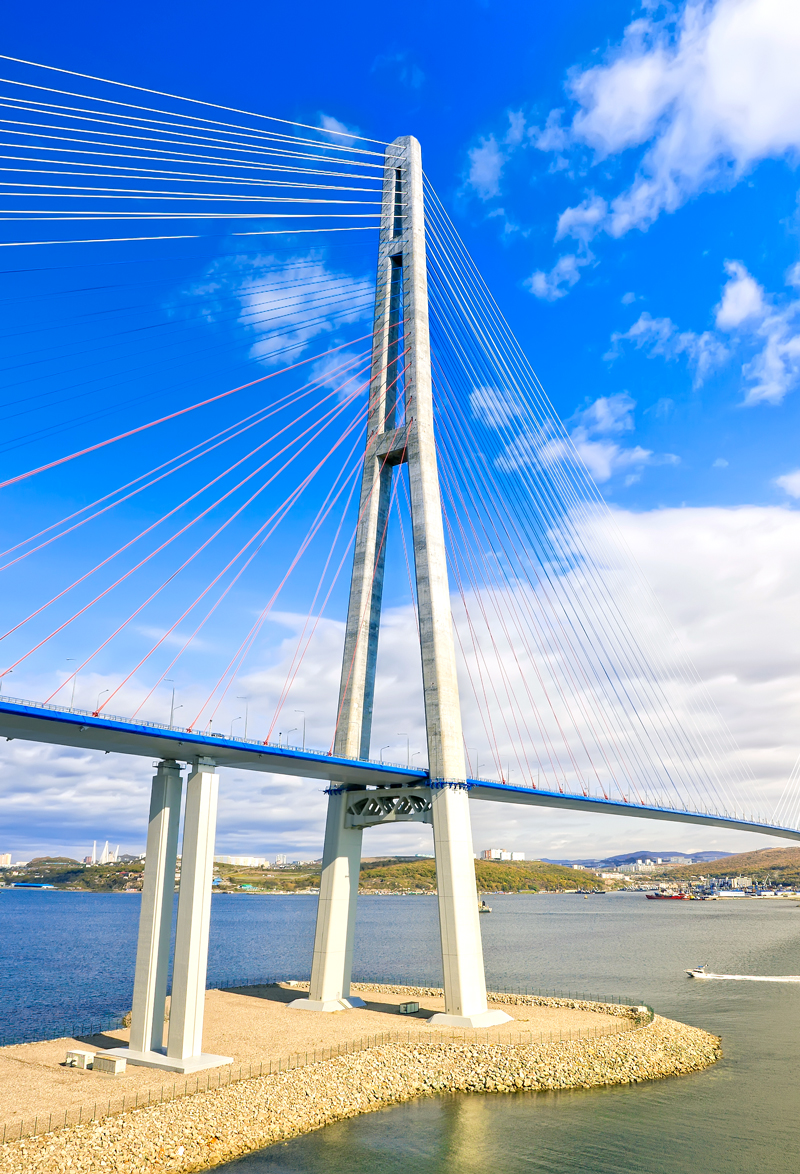The evolution of bridge building around the world illustrates how civil engineers have become ever more ambitious and successful. Structures now soar above straits, inlets, gorges, and rivers which were once impossible to span. The tallest bridges on the planet are striking both in their design and in their construction. To clarify, the definition of “tallest” bridges differs from the “highest” bridges — for the latter, their structural height may be a greater distance from the lowest point beneath their span, but if they have pillars anchored into a sloping site the structures themselves may not be as tall. With that in mind, let’s explore the seven tallest bridges in the world.
7. Sutong Bridge – China
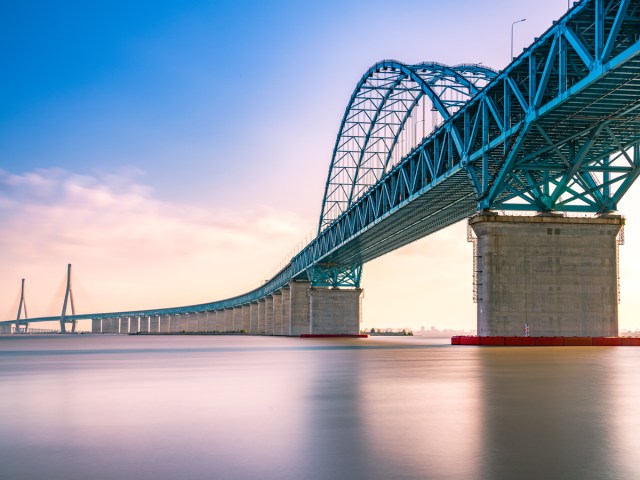
Sutong Bridge, located about 60 miles northwest of Shanghai, crosses the Yangtze River to connect the cities of Suzhou and Nantong. The cable-stayed bridge’s two iconic towers measure 1,004 feet high, making this the seventh-tallest bridge in the world. When it opened in 2008, local residents welcomed the infrastructural improvement, as it cut a typical four-hour ferry crossing down to a drive of just around an hour.
For years, the river’s hydrological and geological characteristics had frustrated engineers, but they were finally able to achieve what had seemed impossible. But it wasn’t just the height of the bridge that drew attention — its two pylon foundations sit on 131 piles, which are the deepest and largest that had ever been attempted. As a result, the American Society of Civil Engineers honored the bridge’s designers with the 2010 Outstanding Civil Engineering Achievement Award.
6. Russky Bridge – Russia

With its main tower measuring 1,053 feet tall, Russky Bridge is another cable-stayed bridge, this time in the city of Vladivostok in eastern Russia. The bridge — which connects Russky Island to the Muravyov-Amursky Peninsula — took almost four years to construct, opening in summer 2012.
A couple of months later, news of the bridge reached a wider audience after Russky Island hosted the 2012 Asia-Pacific Economic Cooperation (APEC) Summit. Following a nationwide competition in 2016, the Russky Bridge was also selected to appear on the 2000 ruble banknote, further proof of the nation’s pride in this remarkable building project.
5. Yavuz Sultan Selim Bridge – Turkey
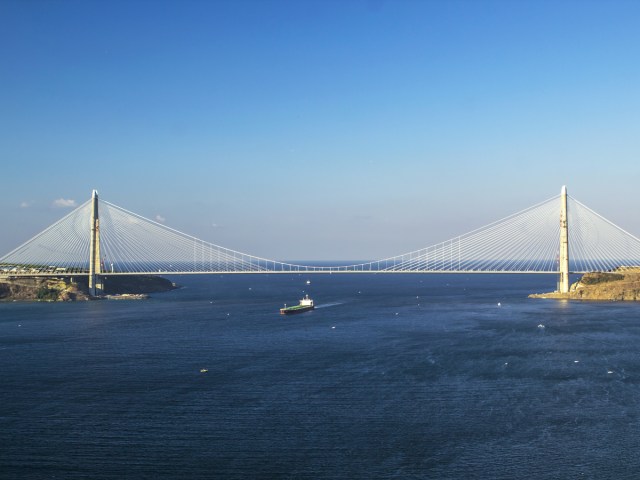
Yavuz Sultan Selim Bridge is named after Sultan Selim I, an expansionist Ottoman ruler who governed at the turn of the 16th century. His nickname was Yavuz, which means “stern” or “tough” in Turkish. Today, his namesake bridge is located to the north of Istanbul, Turkey’s largest city. It spans the Bosphorus Strait close to where it meets the Black Sea, connecting the city of Sarıyer on the European side with Beykoz on the Asian side.
The bridge took a little over three years to build and opened in 2016. At its highest point, the cable-stayed suspension bridge measures a whopping 1,056 feet. Though it’s currently the fifth-tallest bridge in the world, it has already slid down the rankings since its inception, as three taller bridges have since been completed. Nevertheless, the Yavuz Sultan Selim Bridge provides a useful additional crossing over the bustling Bosphorus, accommodating both road and rail traffic.
4. Husutong Yangtze Bridge – China
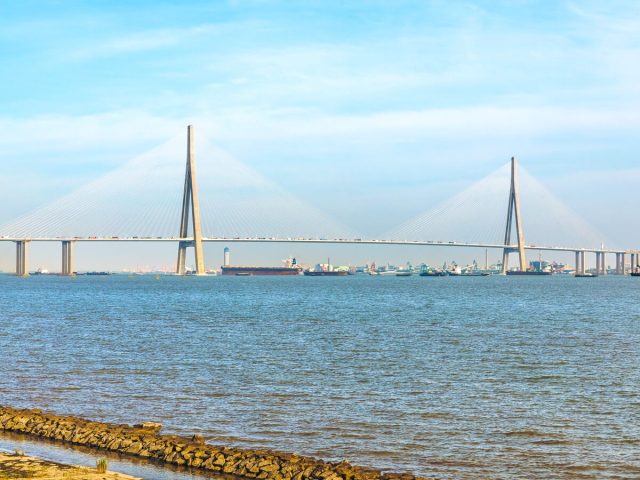
Like the Sutong Bridge, you’ll find this 1,066-foot-tall bridge spanning the Yangtze River, the third-longest river in the world. The Husutong Yangtze Bridge is located about 30 miles upriver from its shorter counterpart. Construction on the project began in 2014, and today this double-decker bridge carries a four-track railway in the steel box structure on its lower level. The six lanes of traffic running above it pass beneath the slender arches that support the cables.
Husutong gets the first part of its name from the common abbreviation used for the Shanghai-Suzhou-Nantong railway, whose trains began crossing the bridge in 2020. As with the Sutong Bridge, the construction of Husutong Yangtze Bridge was aimed at encouraging economic development on both sides of the river, helping the inhabitants of Nantong tap into the economic opportunities found in Suzhou and Shanghai.
3. Pingtang Bridge – China
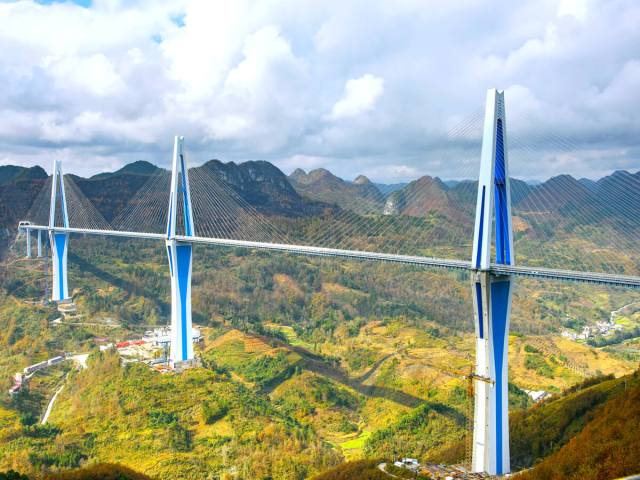
Once an isolated and landlocked Chinese province, Guizhou has experienced considerable development in recent decades. This is illustrated by the abundance of bridges in the region, many of which have cut short the long journeys on the region’s winding mountain roads. The tallest of these is Pingtang Bridge, which opened in 2020. At its mid-point, this impressive span stands at a height of 1,089 feet.
The structure contains the world’s tallest reinforced concrete bridge tower and was also the first cable-stayed bridge in a mountainous area to be designed with three towers. The Sky Bridge service zone enables motorists and curious tourists to park and admire the bridge and surrounding scenery.
2. 1915 Çanakkale Bridge – Turkey
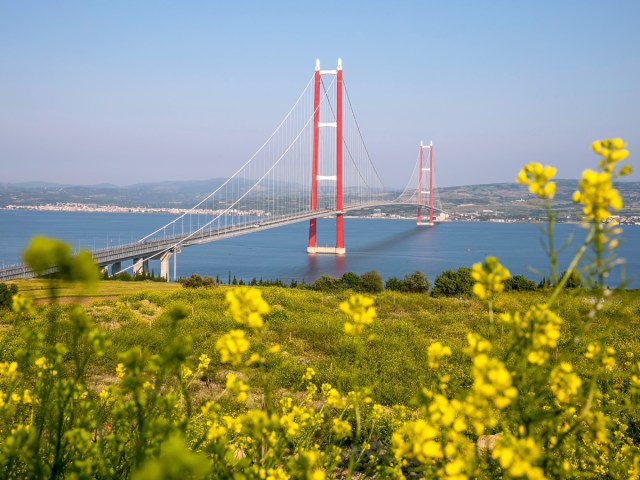
The 1915 Çanakkale Bridge is a road suspension bridge located in northwest Turkey. Each of its twin towers soars to a height of 1,096 feet, making this the second-tallest bridge on the planet. But it’s also a record-breaker in its own right. Crossing the Dardanelles Strait, it’s the longest suspension bridge in the world, spanning an incredible 15,118 feet from end to end.
This mammoth construction project started in March 2017. By 2021, the last of its 288 spun cables was hauled into position, and the construction team finished installing the deck the following year. The bridge was formally inaugurated in March 2022. If you’re familiar with Turkish history, you’ll appreciate the significance of a number of features in the bridge’s design. The name references a pivotal naval victory in 1915, and the shape of the piers echoes the Çanakkale Martyrs’ Memorial, which was erected to commemorate the sacrifice made by Turkish soldiers during World War I.
1. Millau Viaduct – France
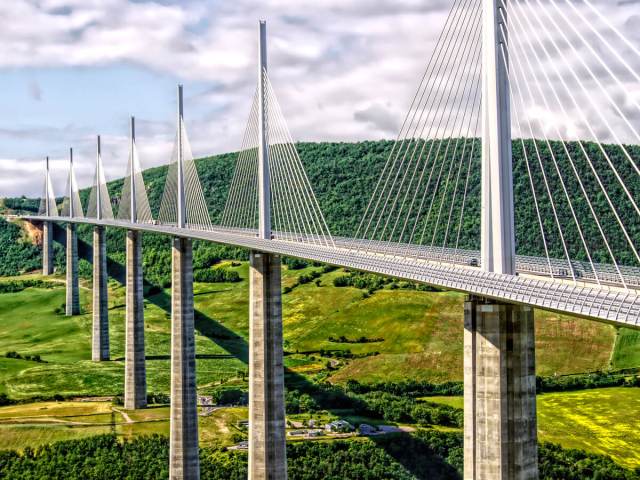
The Millau Bridge, often referred to as the Millau Viaduct, has been the world’s tallest bridge since it was completed in 2004. Two years later, the International Association for Bridge and Structural Engineering (IABSE) honored the striking bridge with the Outstanding Structure Award. At maximum height, the Millau Viaduct measures 1,125 feet tall, thanks to one of its towers being situated close to the floor of the Tarn Valley in the Aveyron region of southern France.
This extraordinary bridge took three years to build, the result of a partnership between French engineer Michel Virlogeux and renowned English architect Lord Norman Foster. It carries part of the A75 highway, popularly known as La Méridienne. To admire it, you can visit the dedicated visitor center alongside a viewing area in nearby Brocuéjouls. The elegant structure touches the valley floor in only nine places, resting on deceptively slim pillars that defy expectations.
More from our network
Daily Passport is part of Inbox Studio, which publishes content that uplifts, informs, and inspires.






